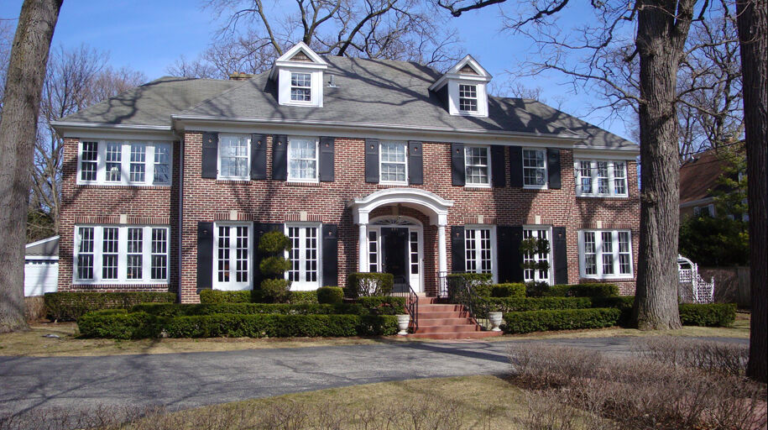How to negotiate the best price when buying a home
So you’ve taken the steps to get where you are right now – ready to make an offer. Remember, you know what you want, you know what you like, and you can rest easy and trust in knowing that you’ve gone through the process appropriately to get to this point – so, in the immortal words of (wise beyond his eight years) Kevin McCallister, “This is it, don’t get scared now”. Sure, you may not have had to defend your home with nothing but its existing elements (while your parents and everyone you love are well on their way to Paris) from a couple of unsuspecting petty thieves – but you’ve had to prepare nonetheless. Looking at it now, getting ready to hit the market and viewing some homes are not really similar to the masterpiece ‘Home Alone’ at all, but I think we can agree that it’s an incredible, timeless classic.
Buyer Negotiation Checklist
1. Revisit the data
Circling back to a couple Bōde tools you’re already familiar with will greatly empower your offer and negotiating process. By looking at Sold Data and Comparable homes, you’ll be able to enter the negotiation objectively and mitigate the risk of your conscience telling you you’re in over your head. You could actually provide this information when making an offer so the negotiation starts off on a data-based footing. You will also be able to see the Market Data on the list vs sold price ratio in that community… This indicates where people actually landed in the end – something to consider.
2. Consider conditions
While the data you bring to the table will support your offering price, it’s important to note that not all offers are created equal. That is, various conditions will carry a lot of weight with sellers depending where they find themselves in their home sale journey. If you are at the upper limit of your budget, making a clean offer that does not include financing or inspection conditions will likely pique the interest of a seller in a market where homes are fetching at or above list price with quick transaction times. A material deposit incorporated into your offer will also show the seller you’re motivated to get the deal done.
If that exposure makes you a bit nervous, traditional conditions like inspection, financing, and sale of your existing home are not uncommon… in fact, many offers have conditions attached. Conditions do add complexity to the seller’s urgency to complete their home transaction so it is important to only include conditions and terms that are necessary. Attaching conditions to an offer is certainly a standard procedure, so be thoughtful with your approach as it’s your offer with your conditions – you’ve put them in place to protect you.
3. Position your possession
Where possible, sellers often look favourably on a possession day close to what they indicated as ideal. Quick tip: don’t make possession day a Sunday – often the pros that support you on your final day (lawyers, banks…) are closed on Sundays. Visit the Bōde Prō Marketplace for a great selection of local, pre-vetted prōs for each step of the home purchasing process.
4. Offering your offer
To state the obvious, there is a person on the other side of this offer… Somebody who made this home theirs and attractive enough for you to want to buy it. Before sending your offer in, writing a nice note certainly doesn’t hurt. It helps them see you as a human too. Time to press send!
5. Navigating negotiations
As you’re aware, just because a home comes with a list price, doesn’t mean you add it to your cart and transact on your way out the door. Far from it. I’m sure you’ve heard stories of a friend of a friend of a neighbour who paid X less than list on their home, or your cousin’s neighbour’s friend who sold their house WAY over list before it even hit the market – surely a bit of salt and pepper on both anecdotes. But it’s generally a safe assumption that you could pay something different than the list price following a negotiation with the seller.
Negotiating is equal parts art and science. It’s fair to say that in any scenario the buyer will want to buy the home for as little as possible, and the seller will want to sell the home for as much as possible. Your understanding of the neighbourhood’s Sold Data and having examples of Comparable homes and their list price vs. sale price will bolster your position – requesting an appraisal will also help frame your offer. It’s always wise to not take the negotiation personal and to do your best to leave your emotions at the door. Getting into a bidding war with your heart is likely to result in surpassing your budget and overspending. Utilizing Bōde’s Sold Data and Comparables information will act as a sober second thought as you jockey to find the right place for the right price.
6. You have a deal!
Once everyone is happy with the terms and conditions, price and timing of the deal, technology kicks in. Everything you have agreed to auto-populates an industry standard contract and you “click” to accept. It really is amazing what you can do with a click these days!
With a reasonably pain-free negotiation behind you, you’re feeling ready to celebrate – but perhaps keep the cork in the bottle at this point (at least the celebration bottle, feel free to treat yourself to a more pedestrian libation at this juncture). The conditions you’ve put in place and other elements of your offer will need to be finalized prior to closing and ultimately taking over possession of your new home. You’re allowed to be excited, but maybe pump the breaks with getting your address changed – stay tuned for the next steps we take you through in order to close on your new place.





